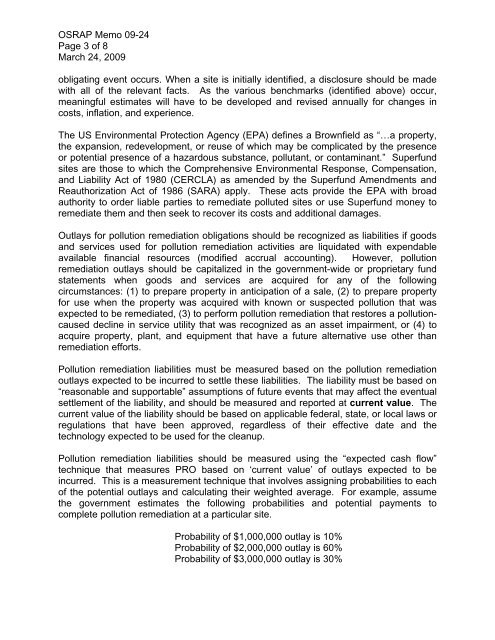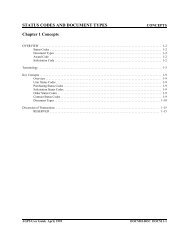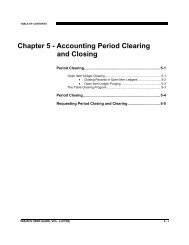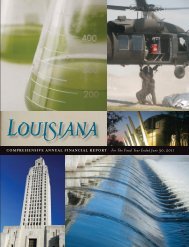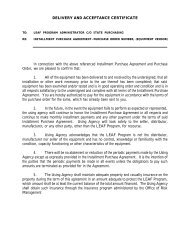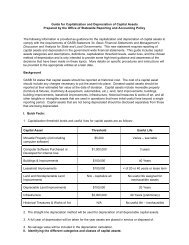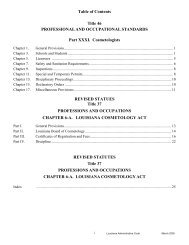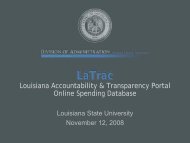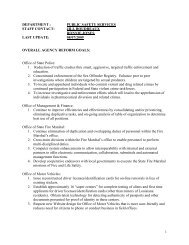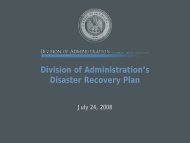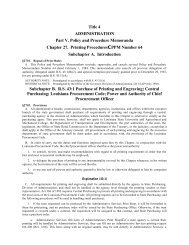(GASB) Statement 49, Accounting and Financial Reporting for ...
(GASB) Statement 49, Accounting and Financial Reporting for ...
(GASB) Statement 49, Accounting and Financial Reporting for ...
You also want an ePaper? Increase the reach of your titles
YUMPU automatically turns print PDFs into web optimized ePapers that Google loves.
OSRAP Memo 09-24Page 3 of 8March 24, 2009obligating event occurs. When a site is initially identified, a disclosure should be madewith all of the relevant facts. As the various benchmarks (identified above) occur,meaningful estimates will have to be developed <strong>and</strong> revised annually <strong>for</strong> changes incosts, inflation, <strong>and</strong> experience.The US Environmental Protection Agency (EPA) defines a Brownfield as “…a property,the expansion, redevelopment, or reuse of which may be complicated by the presenceor potential presence of a hazardous substance, pollutant, or contaminant.” Superfundsites are those to which the Comprehensive Environmental Response, Compensation,<strong>and</strong> Liability Act of 1980 (CERCLA) as amended by the Superfund Amendments <strong>and</strong>Reauthorization Act of 1986 (SARA) apply. These acts provide the EPA with broadauthority to order liable parties to remediate polluted sites or use Superfund money toremediate them <strong>and</strong> then seek to recover its costs <strong>and</strong> additional damages.Outlays <strong>for</strong> pollution remediation obligations should be recognized as liabilities if goods<strong>and</strong> services used <strong>for</strong> pollution remediation activities are liquidated with expendableavailable financial resources (modified accrual accounting). However, pollutionremediation outlays should be capitalized in the government-wide or proprietary fundstatements when goods <strong>and</strong> services are acquired <strong>for</strong> any of the followingcircumstances: (1) to prepare property in anticipation of a sale, (2) to prepare property<strong>for</strong> use when the property was acquired with known or suspected pollution that wasexpected to be remediated, (3) to per<strong>for</strong>m pollution remediation that restores a pollutioncauseddecline in service utility that was recognized as an asset impairment, or (4) toacquire property, plant, <strong>and</strong> equipment that have a future alternative use other thanremediation ef<strong>for</strong>ts.Pollution remediation liabilities must be measured based on the pollution remediationoutlays expected to be incurred to settle these liabilities. The liability must be based on“reasonable <strong>and</strong> supportable” assumptions of future events that may affect the eventualsettlement of the liability, <strong>and</strong> should be measured <strong>and</strong> reported at current value. Thecurrent value of the liability should be based on applicable federal, state, or local laws orregulations that have been approved, regardless of their effective date <strong>and</strong> thetechnology expected to be used <strong>for</strong> the cleanup.Pollution remediation liabilities should be measured using the “expected cash flow”technique that measures PRO based on ‘current value’ of outlays expected to beincurred. This is a measurement technique that involves assigning probabilities to eachof the potential outlays <strong>and</strong> calculating their weighted average. For example, assumethe government estimates the following probabilities <strong>and</strong> potential payments tocomplete pollution remediation at a particular site.Probability of $1,000,000 outlay is 10%Probability of $2,000,000 outlay is 60%Probability of $3,000,000 outlay is 30%


